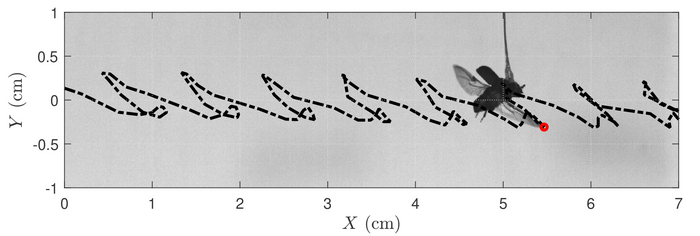WASHINGTON, May 9, 2023 – The mountain pine beetle is one of the main causes of tree mortality in the pine forests of North America. For example, the insect has killed thousands of acres of pine forest in British Columbia and Alberta, and as a result, the areas are more vulnerable to wildfire. Increased tree mortality has turned Canada’s forests into a large net source of atmospheric carbon dioxide – emitted from the burned or decaying wood of dead trees – rather than a sink.

Credit: Jaime G. Wong
WASHINGTON, May 9, 2023 – The mountain pine beetle is one of the main causes of tree mortality in the pine forests of North America. For example, the insect has killed thousands of acres of pine forest in British Columbia and Alberta, and as a result, the areas are more vulnerable to wildfire. Increased tree mortality has turned Canada’s forests into a large net source of atmospheric carbon dioxide – emitted from the burned or decaying wood of dead trees – rather than a sink.
In Physics of Fluids, by AIP Publishing, researchers from the University of Alberta studied the flight performance of the mountain pine beetle from a fluid mechanics and an entomological perspective. Understanding these aspects of the insect’s flight could improve estimates of its spread through the environment and preserve pine forests.
To examine insect flight, the team employed a type of model previously used for idealized airfoils. They showed that it can be successfully applied to multiple individual animals across biological sex, insect age, and body size. In doing so, the model can predict how these factors impact flight characteristics.
“We found that there is a dimensionless grouping of velocity and wing beat amplitude that can predict the thrust produced by an insect, and that this grouping can dramatically improve our ability to determine factors that affect flight performance in insects,” said author Zahra Hajati.
After looking at multiple insects, each with its own slightly different wing shape (including some with wing damage), age, and size, the team found differences by group. Female beetles may have greater flight endurance than males, and younger beetles flew with less thrust than other ages.
“This model opens new avenues for entomological investigation, providing a means of dramatically improving statistical confidence levels for insect dispersion studies,” said Hajati.
For the airfoil model to work, the researchers had to modify it to deal with the 3D wing of an insect rather than the classic tear-drop shape of an idealized airfoil. Surprisingly, the primary difference between idealized airfoils and the small, real wings was the relative influence of viscosity, with the insects being more sensitive than the idealized case.
“When we plotted the model against thrust produced by the insects, we were prepared to see a cloud of points roughly arranged into a line, so we were very excited to see such a straight line through our data,” said Hajati “We were surprised at how linearly the forces scaled with wing motion.”
Individual wingbeats are about a hundredth of a second each, and the researchers looked at the forces generated by insects over the course of a few wingbeats. However, in nature, insects can fly for hours during dispersal flights. Going forward, the team plans to relate the wingbeat-to-wingbeat scaling of force generation and energy consumption to how far the insects can disperse over entire flights.
###
The article “Strouhal and Reynolds number scaling of force production in the mountain pine beetle” is authored by Zahra Hajati, Antonia Musso, Zachary Weller, Maya Evenden, and Jaime G. Wong. It will appear in Physics of Fluids on May 9, 2023 (DOI: 10.1063/5.0145208). After that date, it can be accessed at https://doi.org/10.1063/5.0145208.
ABOUT THE JOURNAL
Physics of Fluids is devoted to the publication of original theoretical, computational, and experimental contributions to the dynamics of gases, liquids, and complex fluids. See https://aip.scitation.org/journal/phf.
###
Journal
Physics of Fluids
DOI
10.1063/5.0145208
Article Title
Strouhal and Reynolds number scaling of force production in the mountain pine beetle
Article Publication Date
9-May-2023




